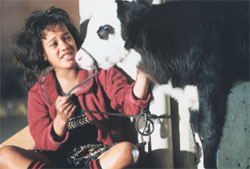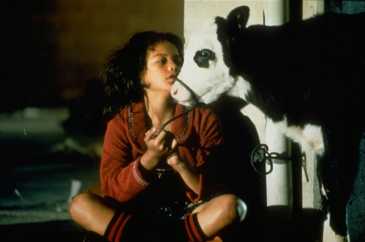 A cow is a cow, right? It stands in the field all day and chews and looks at you with big soulful eyes. When you drive past a field at night, the cow still stands there, chewing and gazing and maybe mooing a bit. And when it starts to rain, the cow lies down to keep its piece of grass nice and dry. Well, yes there’s all that but there is so much more to the humble cow than meets the eye.
A cow is a cow, right? It stands in the field all day and chews and looks at you with big soulful eyes. When you drive past a field at night, the cow still stands there, chewing and gazing and maybe mooing a bit. And when it starts to rain, the cow lies down to keep its piece of grass nice and dry. Well, yes there’s all that but there is so much more to the humble cow than meets the eye.
The auroch is the ancestor of the modern day domesticated cow. There are prehistoric cave paintings of aurochs and historians estimate that the domestication of such creatures dates back as far as 10,000 years.
There have been remains of domesticated cattle found in Turkey and these remains date back to 6,500 BC. It is believed that cattle originated in India millions of years ago and migrated to Europe, North Africa and the rest of Asia.
There were two species of cattle called the Bos taurus (wild cattle of Europe) and the Bos indicus (humpbacked cattle of Asia). It is believed that the very last auroch was killed by a poacher in 1627 on a hunting reserve outside of Warsaw, Poland.
There are now around 287 types of cattle in the world. Originally, cattle would have been used to plough fields, carry heavy objects (until they were replaced by horses) as well as for meat, skin and milk.
Cows can now be seen all over the world and in some areas, cows and cattle are famous. Texas, for example is perhaps one of the best known areas to find cattle. Huge cattle ranches, cowboys on horses and motorbikes eating T-bone steaks and wearing leather boots can be seen out of your window as you drive through the State.
Children are brought up on milk, we put milk on our cereal and in our tea, people bathe in it, yoghurt and cheese is made from it and where would we be without butter to spread on our toast? Cows are fantastic! And they give us meat and clothes as well.
Some people are vegetarian and don’t believe in killing animals for their meat or skins. Others are vegans and do not believe in eating or drinking any dairy products, eating meat or using skins from animals that have been farmed for such purposes.
A lot of people have allergies to dairy products and have to avoid them. But there are a heap of people who love milk, meat and other dairy products – and some people who just like cows the way they are, alive and standing in a field.
Cow Facts
Cows are fascinating creatures: –
- A cow can’t vomit
- No two cows have exactly the same spot pattern
- Before a cow can produce milk, she must be a mother
- Cows spend up to 8 hours a day eating!
- Cows like to salivate – a cow can produce 125lbs of saliva a day
- Cows spend 13 hours a day lying down (sometimes still eating)
- A cow has 4 sections to it’s stomach and chews the cud (that is, she regurgitates her food to chew it again – this aids digestion)
- You can lead a cow upstairs but not back down as her knees do not bend that way
- The oldest cow was called Big bertha and lived until the age of 49 years and 9 months
- A ‘flink’ is a group of 12 or more cows
- The intestine of a cow can be as long as 170 feet
 Milking Cows
Milking Cows
Cloe and her tribal companions would not have been able to milk Bluebell. As we have already mentioned, cows must become a mother before they can give milk. This usually happens at the age of 2 years.
Milking a cow is not as easy at is seems, particularly if the cow has a case of the jiggles or wants to kick. A cow needs to be milked twice a day and usually at the same times each day, so that she continues to produce milk.
People used to drink milk fresh from the pail but now we know it is best to pasteurize milk to avoid getting any nasty germs and bugs like listeria and salmonella. Pasteurization is the method of heating milk until the germs are killed.
The tribes would have been very glad of dairy products as they contain essential nutrients for our bodies. Hopefully they found some UHT or powdered milk in the shops to keep them going before they began to understand how to milk cows and goats. There must have been a few kids whose parents had been farmers and they would have come in pretty handy when it came to milking time.
Next time you drink a glass of nice cold milk, take a minute to appreciate the fact that all you have to do is open the fridge door and voila, there it is.

